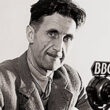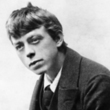Paris vagabond
Description
More Details
Nicholson-Smith, Donald translator., trl
Sante, Luc writer of introduction., win
Similar Series From Novelist
Similar Titles From NoveList
Similar Authors From NoveList
Published Reviews
Publisher's Weekly Review
In this genre-less book (originally published in French in 1952), Clébert insists "this is not supposed to be a Baedeker or some tourist guide." Yet on one level, it is a catalogue of a geographic Paris, of "streets, sidewalks, houses, lampposts, shady nooks, trees, urinals." From Boulevard Poniatowski to the Saint-Ouen flea market, from the red light district of Rue Quincampoix to Place de la Contrescarpe, "the most beautiful little plaza in Paris," Clébert enumerates more streets and landmarks than a Lonely Planet travel book. Yet, on another level, this is a memoir: "I first discovered Paris at the age of seventeen, and lost my virginity as I did so," Clébert writes, and the book takes us from his first job measuring rooms with a folding ruler to his stint as a vagabond, warming his hands by a fire on Rue Sauvage, and, eventually, to his life as a writer with "fifty francs in hand," heading off to work in a bistro. It is also a manual for the down and out: how to live on bouillon and bread, how to sleep in a Paris cemetery, how to remove a tattoo with the back of a red hot spoon, and how to take a clochard's bath in the freezing Seine. Interspersed with the gritty and complimentary photographs by Patrice Molinard, Clébert's sprawling work is held together by the vividness of his language. Nicholson-Smith's translation conveys effectively the simultaneously vulgar and eloquent prose that inspired later writers, including Henry Miller. Appearing in English for the first time, this volume brings a unique city to life, where "to master it one must indeed be either a vagabond poet or a poet vagabond." Clébert was both. 115 b&w photos. (Apr.) © Copyright PWxyz, LLC. All rights reserved.
Kirkus Book Review
"This is not supposed to be a Baedeker or some tourist guide": Clbert offers a hellish itinerary of the less fortunate quarters of Paris.First published in 1952, Clbert's Paris insolite has been classified as a novel, though it is as journalistic as George Orwell's Down and Out in Paris and London; if it has novelistic kinship, it might be to Jean Genet's Thief's Journal. One of its larger themes is the gentrification of Paris, an ongoing process since the days of Baron Haussmann that quickened after World War II: he writes of the "brutal disappearance of the Saint-Sverin district, with its pick-up-sticks players and its hordes of derelicts," while admitting that the city is dotted with "inhuman holes" that might stand a little policing up. Writing of the "lower depthsof a Paris to which the public is forbidden entry," Clbertor his alter ego, at any ratehas two constant preoccupations. He is hungry, ravenously hungry, all the time, and he observes bitterly, "You always come back to the same old question: how are you going to eat?" There are soup kitchens and charity wards, of course, but the Clbert-ian vagabond has his dignity. Then there is sex: if one is hungry and poor, who will partner with him? The answers are several and sometimes tiresome in their macho boastfulness: "All you fine chicks, young and fresh, who found pleasure with this city vagabond, I thank you!" The photographs, by Molinard, are in the stark documentary style of a Weegee or Robert Frank; some are quite ordinary, but others stand out, such as an anti-Djeuner sur l'herbe in which three poor people gather around a makeshift hearth for warmth and companionship. Altogether, they add to the impression that this is less a novel than a book of reportage. But no matter how it's classified, it's a sobering, eyes-wide-open view of the Paris no guidebook would care to portray. Copyright Kirkus Reviews, used with permission.
Publishers Weekly Reviews
In this genre-less book (originally published in French in 1952), Clébert insists "this is not supposed to be a Baedeker or some tourist guide." Yet on one level, it is a catalogue of a geographic Paris, of "streets, sidewalks, houses, lampposts, shady nooks, trees, urinals." From Boulevard Poniatowski to the Saint-Ouen flea market, from the red light district of Rue Quincampoix to Place de la Contrescarpe, "the most beautiful little plaza in Paris," Clébert enumerates more streets and landmarks than a Lonely Planet travel book. Yet, on another level, this is a memoir: "I first discovered Paris at the age of seventeen, and lost my virginity as I did so," Clébert writes, and the book takes us from his first job measuring rooms with a folding ruler to his stint as a vagabond, warming his hands by a fire on Rue Sauvage, and, eventually, to his life as a writer with "fifty francs in hand," heading off to work in a bistro. It is also a manual for the down and out: how to live on bouillon and bread, how to sleep in a Paris cemetery, how to remove a tattoo with the back of a red hot spoon, and how to take a clochard's bath in the freezing Seine. Interspersed with the gritty and complimentary photographs by Patrice Molinard, Clébert's sprawling work is held together by the vividness of his language. Nicholson-Smith's translation conveys effectively the simultaneously vulgar and eloquent prose that inspired later writers, including Henry Miller. Appearing in English for the first time, this volume brings a unique city to life, where "to master it one must indeed be either a vagabond poet or a poet vagabond." Clébert was both. 115 b&w photos. (Apr.)
[Page ]. Copyright 2016 PWxyz LLC




























